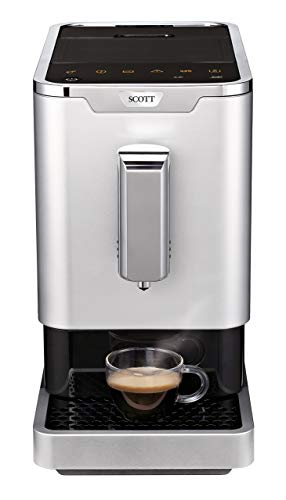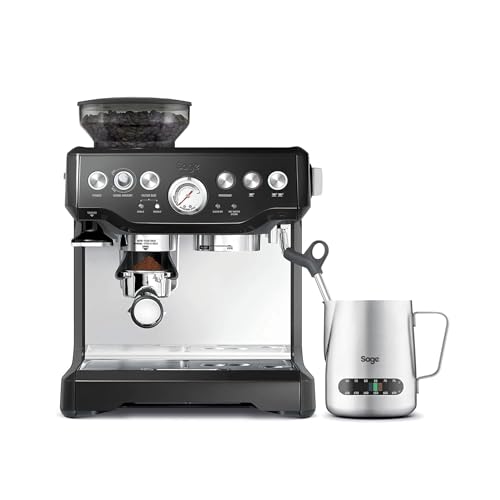Guide To Bean Coffee Machine: The Intermediate Guide To Bean Coffee Ma…
Dennis
2024.12.06 10:29
291
0
본문
 Coffee Bean Coffee Machines
Coffee Bean Coffee MachinesWith a coffee maker you can enjoy fresh, delicious whole-bean espresso that is prepared according to your requirements. The machine grinds, measures, and tamps, and forces hot water into the ground to produce rich, flavourful, coffee.
 These machines offer a variety of advantages over pod machines, such as less environmental waste and a simple to use. The machine is fully automated and operates by pressing a single button.
These machines offer a variety of advantages over pod machines, such as less environmental waste and a simple to use. The machine is fully automated and operates by pressing a single button.Here are a few alternatives to the word "grind"
When you make your own coffee, the type of grind you select is critical to getting the best cup of coffee. The size, shape, and consistency are all crucial. When beans are not properly ground, they can cause the water to flow too fast through the ground, leading to under extraction of flavor or an over extraction of bitterness.
A good grinder will have various sizes of grind to give you options for different brewing methods. It is important to experiment with different sizes of grinding, as they can greatly affect the flavor of your brew. The smallest of particles are ideal for espresso and French presses, while larger, coarser ones are best for brewing in an immersion such as the Moka pot or Chemex.
If you want to get an even more delicious cup of coffee, consider roasting your own beans and then grinding them right before brewing. This will maximize the flavor and aroma of your brew, and help create the perfect cup each time. It is also essential to store the ground beans in an airtight container an environment that is cool and dark to preserve their freshness and flavor.
Commercial coffee bean to cup equipment to cup machines offer unbeatable convenience, allowing you to have barista-quality coffee at the push of an button. These machines handle everything from preparation of the beans to tamping making them a great choice for busy cafes as well as offices.
The first step is grinding your beans to a specific size. They can be set up to match your preferred brewing method and can be programmed to disperse the desired number of cups at a time. Some will automatically tamp the grounds to create an extremely compacted puck of coffee, which ensures the most consistent extraction.
A bean-to-cup machine typically has a large hopper that can be filled with whole beans. The machine will automatically grind and disperse the appropriate amount of beans to suit your chosen brew method. The display on these machines will display the amount of beans and the size of grind you have selected. It will also display the total number drinks that the machine is set to prepare.
Extraction
When a coffee is ground it is broken down into smaller pieces, referred to as particles. The size of the particles could have an impact on the extraction process as well as the final cup's taste. In the machine that brews coffee, the size of the particles is controlled to ensure it matches the extraction method required by the machine. This lets you make a great cup of espresso every time without the need for barista expertise.
The brew duration in the bean-to-cup machine can be controlled to get precisely the strength you desire to drink. This can be a significant advantage over pod machines, which typically give you less control and could result in a weaker or bitter tasting coffee machine fresh beans. In addition to controlling the brew time, bean-to-cup machines typically allow you to regulate the temperature of the water to allow you to decide how strong your coffee will be.
Extraction is a delicate process that relies on the right balance of particle size, dose and tamping pressure. If any of these elements are not in order, it could result in a poorly extracted coffee. Coffee that isn't extracted enough will taste sharp and sour and coffee that is too extracted will taste dry and bitter.
To ensure that your coffee is extracted correctly you must make use of a top-quality grinder and the appropriate type of beans. Light roasts are often not a good choice for fully automated or espresso machines as the short extraction process can result in a coffee bean coffee machine that is flat and lacking in body. Darker roasts with an extremely high Robusta content, such as our Jhai (100 percent Robusta) or Tiga Terra are ideal for these types of machines, as they provide richer flavors and stronger bodies.
In the end, deciding between a bean to cup coffee machine-to-cup machine and a pod coffee maker comes down to personal preference and convenience. Pod coffee machines provide an easy method to make tea and coffee, however they're generally less efficient than a bean-to-cup machine and can produce significant waste due to the disposal of the discarded pods.
Dispensing
Using whole beans eliminates the need for pods, which can save you money and providing more flexibility. However, this also means that your machine will require more frequent maintenance and cleaning than a pod-based model.
Fortunately that these machines were designed with low maintenance in mind and many come with features that can simplify this task. For instance, the majority of bean-to-cup coffee makers feature automatic bean to cup machine (Bookmarks 4 explained in a blog post) cleaning and rinsing cycles, making it easy to keep your machine in good condition without disrupting your day-to-day operations.
Another feature that is useful is the possibility to add steaming hot milk to coffee drinks. This lets your team members customize their drink to match their preferences and preferences while boosting productivity. It is also a great way to show you are concerned about the well-being of your team. In fact, it has been scientifically proven that coffee can increase dopamine and norepinephrine levels, which boosts motivation and focus in the workplace.
Some models also offer beverage customization options, such as the ability to texturize milk for cappuccinos as well as lattes. This is a major draw for baristas who may have only a short amount of time to make each cup of coffee.
Another thing to look for in a high-quality bean-to-cup maker is its water tank and the size of the bean hopper. The water tank determines the amount of time that the machine can run before it must be replenished and the size of the hopper will affect the frequency with which you'll have to replenish the beans. Generally, the larger the capacity of each tank, the less often you'll need to restock.
You must carefully consider the type of beans you will be using prior to purchasing a bean to cup coffee maker. Different grind sizes can alter the taste and consistency of each cup. It is also important to look into the machine's programmable options that allow you to alter your beverages to exactly how you like.
In certain instances the spouts that dispense coffee from your coffee maker may be blocked by coffee residue and other debris left behind after grinding. To prevent an inconsistent and slow flow that could result in an insufficient amount of grounds of coffee, the spouts must be cleaned regularly. This could be due to the grind being coarser, too oily or dried beans, or lack of regular cleaning.
Cleaning
Cleaning coffee machines is an essential component of maintaining them. It stops the buildup and accumulation of residues that could negatively affect the taste and quality. Regular cleaning keeps the machine in good condition and reduces the possibility of a malfunction that could result in a costly repair. Many bean-to-cup coffee machines come with a built-in daily cleaning cycle which will flush through pipes to cleanse the brewing unit. Others will have a separate milk side cleaning cycle in order to ensure that both spouts are clean and safe.
A good rental provider will usually train their staff on the full maintenance and cleaning procedure during the installation. This will help to minimise any confusion over the procedure and ensure that all steps are adhered to. A clear and precise understanding of the process can help you avoid expensive repairs or poor-quality drinks.
After each use, it's best to clean your carafe and permanent filter with soapy water or in the dishwasher, in the event that the item is marked as safe. It is also recommended to run two to three times with fresh water, without K cups or coffee grounds in the machine between uses. This will help remove any oily residues and prevent the build up of yeast, bacteria or mould.
For single-serve coffee machines or pods, it is recommended to do a deep clean and descale at least every four weeks. A vinegar solution is normally used to do this. You can add up to 4 cups of vinegar into the reservoir and then run the machine through the brewing process. When the cycle is finished wash and descale as per the manufacturer's instructions and run a couple of cycles of clean water to eliminate any vinegar odor.
Commercial machines have a built-in the telemetry system, which records each cleaning cycle. Your supplier or you can check this to make sure that the machine is maintained regularly. This can also notify you the possibility that any of the moving parts have become stuck or seized which will require more precise maintenance and repair work.

댓글목록 0